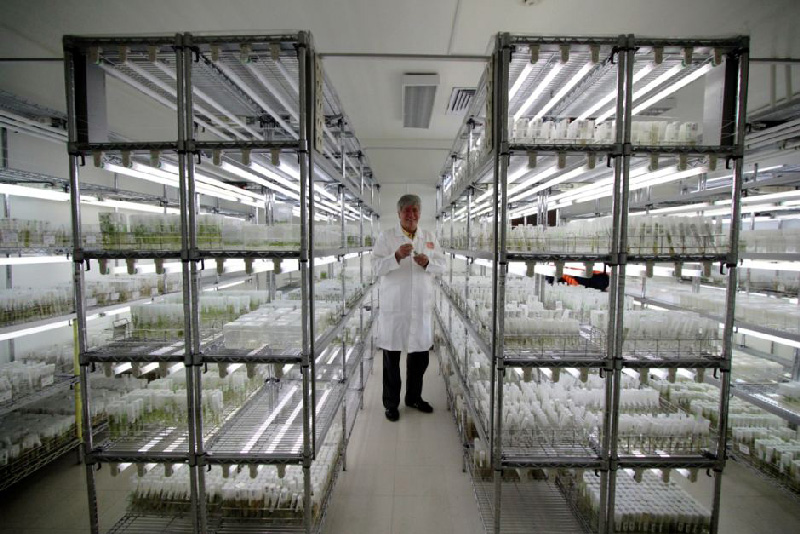“These collections are irreplaceable,” says David Ellis, head of the Lima facility. “You don’t want to have all your eggs in one basket.”
To spread out those “eggs,” CIP backs up “copies” of its 11,000 living plants – representing potato, sweetpotato and nine assorted Andean roots and tubers – to sites in Colombia, Peru, Norway and other places.
The backup process provides an additional measure of protection against threats to global food supplies, which can range from climate change to man-made conflict to natural disaster – threats that are real to many populations now and will be in the future.
CIP’s genebank is clonal, a rarity among sites storing plant material, in that it primarily stores plants rather than seeds. “These are living plants you have to care for on a regular basis,” Ellis says. Methods of collecting, storing and maintaining these specimens vary from those used in seed banks.
“Mother Nature did a wonderful job when she developed the seed, because there, in a little package, you have something that when dried down and stored properly can last in some cases for hundreds of years,” Ellis says. (CIP does store and back up some seeds.)
Several international treaties guide the ways and means their signatory countries collect, store, back up and share specimens, he explains. They include the Convention on Biological Diversity, which 150 world leaders signed in 1992 at the Rio Earth Summit, and the International Treaty for Plant Genetic Resources for Food and Agriculture, which guides how 65 specific crops will be exchanged among countries when used for food, but not for medicinal purposes.
As geographical borders shift due to political factors, and in response to the world’s droughts, floods, earthquakes and monsoons, methods used to collect germplasm must necessarily adapt, Ellis says. “Collecting just doesn’t happen these days the way it used to.” Countries’ shifting budgetary priorities also shape collection practices.
All of which arguably renders existing seed stock that much more precious, Ellis contends.
One of CIP’s backup sites for its seeds is the world’s chief global seed bank, the Svalbard Global Seed Vault, located in the mountains outside Oslo, Norway. A couple of times a year, it opens to accept duplicates of seeds from around the world. “It’s the last resort.” says Ellis.

David Ellis, head of CIP’s Genebank, Lima facility
Many similar relationships exist among organizations like CIP and between countries all with an eye toward securing seeds and seedlings for generations to come, Ellis says.
“It’s about goodwill and good collaboration,” he explains. “This is something we do for each other because we all need it.”
